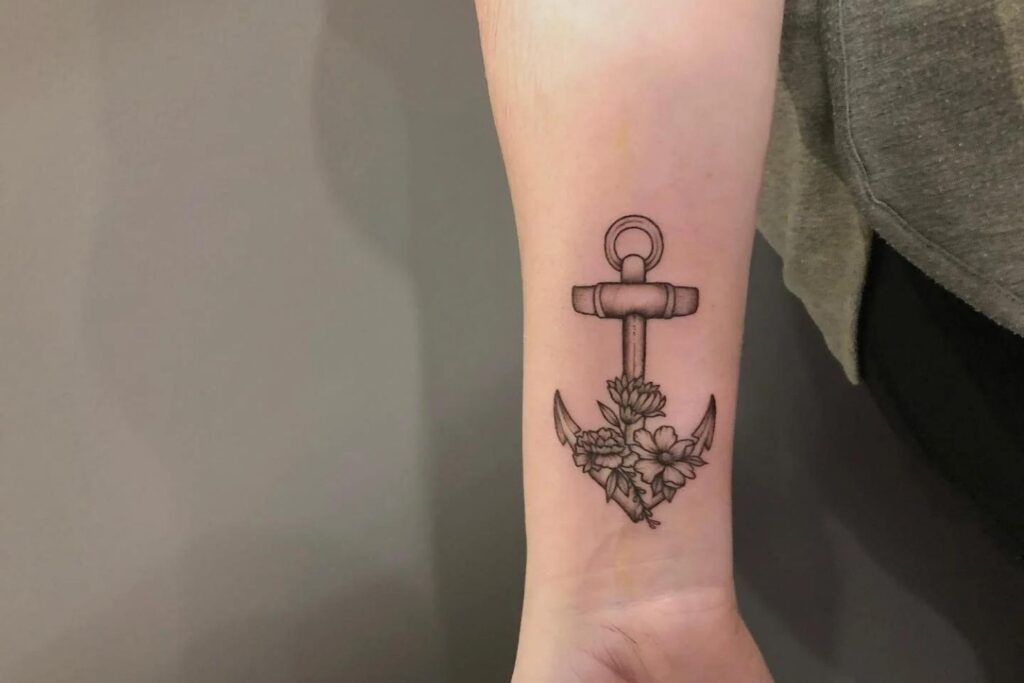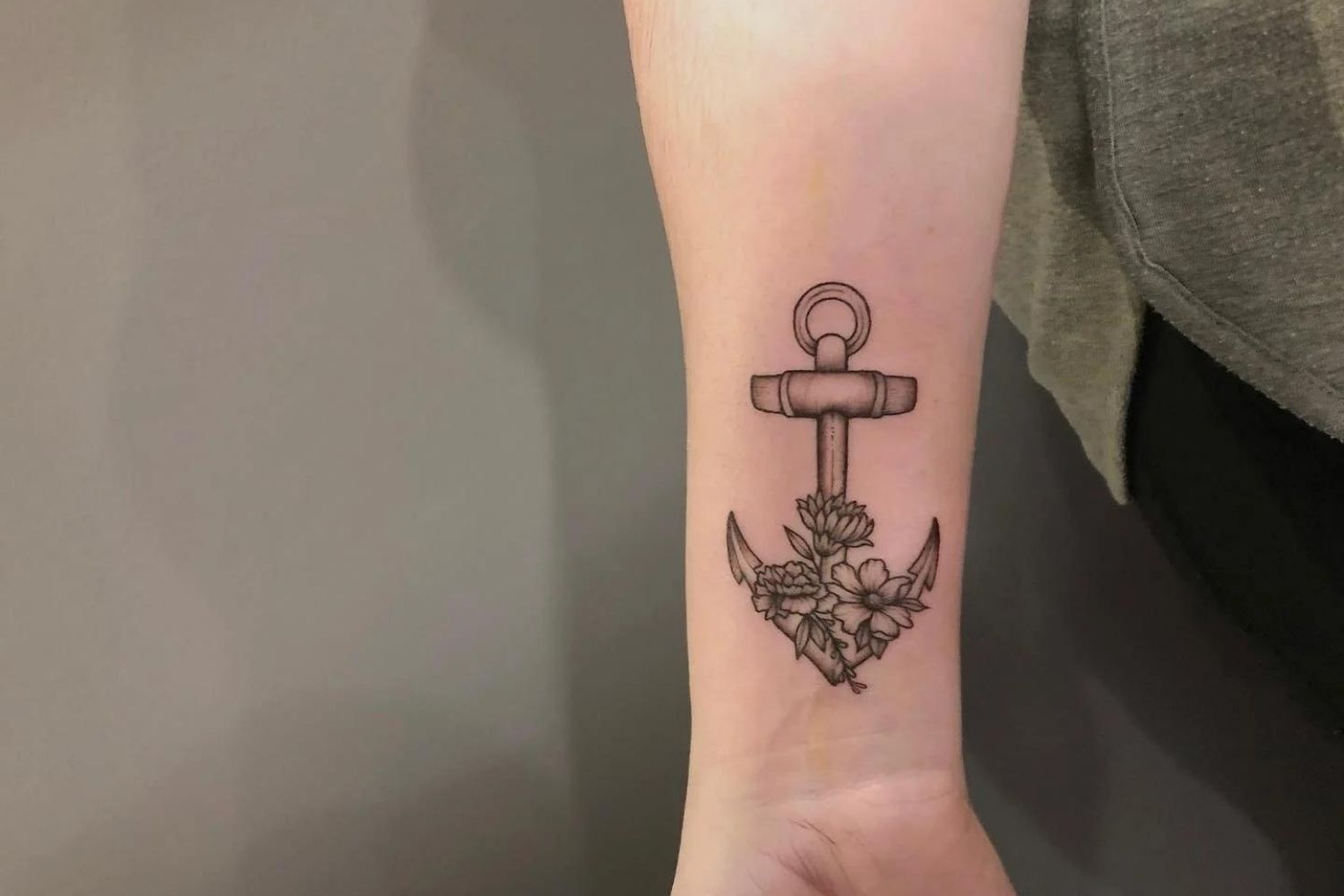
Introduction: The Enduring Appeal of Navy Tattoos
Navy tattoos are more than just ink on skin; they are a powerful form of self-expression, a testament to a life of service, and a connection to a rich maritime history. For centuries, sailors have adorned themselves with nautical symbols, each design carrying a specific meaning, a personal story, or a superstitious charm. From simple anchors to elaborate depictions of mythical sea creatures, navy tattoos represent courage, adventure, and the deep bond between a sailor and the sea. In this comprehensive guide, we’ll explore the history, symbolism, and enduring appeal of navy tattoo designs, providing inspiration and insights for those looking to get inked with a piece of maritime heritage.
A Brief History of Navy Tattoos
The tradition of tattooing among sailors dates back centuries, with evidence of body art found in various maritime cultures around the world. Early sailors often acquired tattoos during their voyages, collecting designs from different ports and cultures as souvenirs and symbols of their travels. These early tattoos were often simple and practical, using readily available materials like gunpowder and urine to create the ink. Over time, tattooing became an integral part of naval culture, with specific designs evolving to represent rank, experience, and superstitions.
In the 18th and 19th centuries, as navies expanded and voyages became longer, tattoos became even more prevalent among sailors. They served as a form of identification in case of shipwreck or death, and also as a way to commemorate significant events, such as crossing the equator or circumnavigating the globe. The rise of electric tattooing in the late 19th century made the process faster and more accessible, further popularizing tattoos among sailors.
Popular Navy Tattoo Designs and Their Meanings
Navy tattoos are rich in symbolism, with each design carrying a specific meaning or representing a particular experience. Here are some of the most popular navy tattoo designs and their interpretations:
Anchor
The anchor is perhaps the most iconic navy tattoo design, symbolizing stability, security, and hope. It represents a sailor’s ability to stay grounded and resilient, even in the face of turbulent seas. An anchor tattoo can also signify a successful Atlantic crossing.
Nautical Star
The nautical star is a five-pointed star, often depicted in black and white, that represents guidance and direction. Sailors believed that the nautical star would help them find their way home safely, acting as a symbolic compass to guide them through treacherous waters.
Swallow
Swallows are often associated with sailors who have traveled long distances. One swallow typically represents 5,000 nautical miles traveled. A sailor with two swallows on their chest has likely covered at least 10,000 nautical miles. Swallows also symbolize the idea of returning home safely, as these birds are known for their ability to find their way back to their nests.
Ship
A ship tattoo can represent a sailor’s love for the sea and their connection to their vessel. The specific type of ship depicted can also hold significance, with a sailing ship often representing adventure and exploration, while a warship may symbolize courage and duty.
Compass
Similar to the nautical star, a compass tattoo represents guidance and direction. It symbolizes a sailor’s ability to navigate through life’s challenges and find their true path. A compass can also represent a desire for adventure and exploration.
Rope
A rope tattoo, typically depicted around the wrist, represents a sailor’s connection to the sea and their ability to handle the ropes on a ship. It can also symbolize strength, resilience, and the bonds of camaraderie among sailors.
Hold Fast
The words “Hold Fast” tattooed on the knuckles are a traditional sailor tattoo that represents the importance of maintaining a firm grip on the ropes of a ship. It symbolizes strength, determination, and the ability to weather any storm.
Pig and Rooster
These animals were often tattooed on sailors’ feet as a good luck charm. Pigs and roosters were often transported on ships in wooden crates, and in the event of a shipwreck, the crates would often float, giving the animals a higher chance of survival. The tattoos were meant to bring the sailor the same luck.
King Neptune
A tattoo of King Neptune, the Roman god of the sea, signifies that a sailor has crossed the equator. It is a mark of experience and a symbol of respect for the power of the ocean.
Shellback Turtle
Similar to the King Neptune tattoo, a shellback turtle tattoo is earned by sailors who have crossed the equator. It is a symbol of initiation into the ranks of experienced seafarers.
Dagger Through a Rose
This tattoo can have multiple meanings, often representing a conflict between love and duty, or the pain and sacrifice associated with a life at sea. It can also symbolize a sailor’s willingness to defend their honor and protect their loved ones.
Choosing the Right Navy Tattoo Design
When choosing a navy tattoo design, it’s important to consider the symbolism and meaning behind the design, as well as your own personal connection to it. Think about your experiences as a sailor, the challenges you’ve overcome, and the values that are important to you. Choose a design that resonates with your own story and represents your unique journey.
It’s also important to choose a skilled and experienced tattoo artist who is familiar with navy tattoo designs. Look for an artist who has a portfolio of nautical-themed tattoos and who can create a design that is both visually appealing and meaningful. A good tattoo artist can also help you customize your design to make it even more personal and unique.
Placement and Size Considerations
The placement and size of your navy tattoo can also affect its overall impact and meaning. Traditional navy tattoos were often placed on the arms, chest, or back, but modern sailors may choose to place their tattoos on other parts of the body as well. Consider the visibility of your tattoo and how it will look in different settings. A large, elaborate tattoo may be best suited for the back or chest, while a smaller, more discreet tattoo may be more appropriate for the arm or ankle.
The size of your tattoo should also be proportional to the area of your body where it will be placed. A small tattoo on a large area of skin may look insignificant, while a large tattoo on a small area may look crowded and overwhelming. Work with your tattoo artist to determine the optimal size and placement for your design.
Modern Interpretations of Navy Tattoos
While traditional navy tattoo designs remain popular, modern sailors and tattoo enthusiasts are also creating new and innovative interpretations of these classic symbols. Some artists are incorporating contemporary styles and techniques, such as watercolor or geometric patterns, to create unique and eye-catching navy tattoos. Others are combining traditional symbols in new and creative ways, adding their own personal touch to these timeless designs.
One popular trend is to incorporate nautical themes into larger, more complex tattoo designs. For example, a sailor might choose to combine an anchor with a compass and a nautical star to create a sleeve tattoo that tells a story about their life at sea. Another trend is to use navy tattoos to commemorate specific events or achievements, such as completing a deployment or earning a particular rank.
Caring for Your Navy Tattoo
Proper aftercare is essential for ensuring that your navy tattoo heals properly and looks its best for years to come. Follow your tattoo artist’s instructions carefully and keep your tattoo clean and moisturized. Avoid exposing your tattoo to direct sunlight or harsh chemicals, and be sure to protect it with sunscreen when you are outdoors.
During the healing process, your tattoo may scab or peel. It’s important to resist the urge to pick at the scabs, as this can damage the tattoo and increase the risk of infection. Allow the scabs to fall off naturally and continue to moisturize your tattoo until it is fully healed.
Once your tattoo is healed, it’s important to continue to care for it by keeping it clean and moisturized. Regular moisturizing will help to keep the skin supple and prevent the tattoo from fading or cracking over time. You should also avoid excessive sun exposure, as this can cause the colors in your tattoo to fade.
Navy Tattoos as a Symbol of Heritage
For many sailors, navy tattoos are more than just body art; they are a symbol of heritage and a connection to a long line of seafarers who have braved the oceans and served their countries with courage and dedication. These tattoos represent the values of honor, duty, and sacrifice, and they serve as a reminder of the challenges and rewards of a life at sea.
Whether you are a seasoned sailor or simply someone who appreciates the rich history and symbolism of navy tattoos, these designs offer a powerful way to express your love for the sea and your connection to the maritime world. By choosing a design that is meaningful to you and caring for your tattoo properly, you can ensure that it remains a lasting symbol of your heritage and a testament to your own unique journey.
Conclusion: The Timeless Legacy of Navy Tattoos
Navy tattoos have been an integral part of maritime culture for centuries, serving as a form of self-expression, a symbol of experience, and a connection to a rich history. From simple anchors to elaborate depictions of mythical sea creatures, these designs represent courage, adventure, and the deep bond between a sailor and the sea. Whether you are a seasoned sailor or simply someone who appreciates the artistry and symbolism of navy tattoos, these designs offer a powerful way to express your love for the ocean and your connection to the maritime world. As you consider getting your own navy tattoo, remember the rich history and symbolism behind each design, and choose a tattoo that resonates with your own personal story and values. In doing so, you’ll be carrying on a timeless tradition and honoring the legacy of those who have braved the seas before you.

